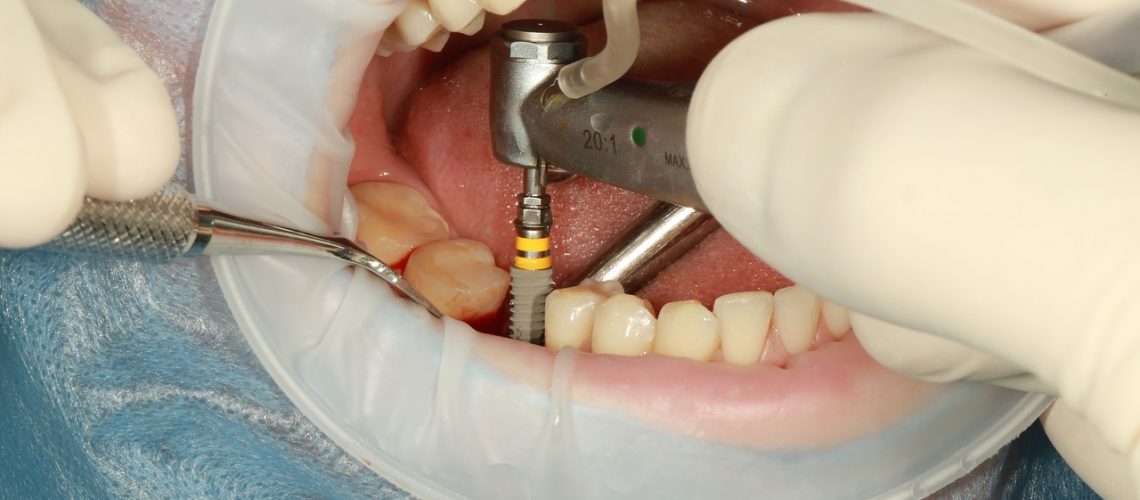The 7-Second Trick For Dental Sense
Table of ContentsExamine This Report about Dental SenseDental Sense Fundamentals ExplainedTop Guidelines Of Dental SenseThe Main Principles Of Dental Sense
are medical tools operatively implanted into the jaw to bring back a person's ability to chew or their look. They provide support for artificial (fake) teeth, such as crowns, bridges, or dentures. When a tooth is shed because of injury or illness, a person can experience complications such as rapid bone loss, malfunctioning speech, or modifications to chewing patterns that lead to pain.Dental implant systems include an oral implant body and dental implant joint and might also include an abutment fixation screw. Dental implant vs bridge. The oral implant body is operatively placed in the jawbone in place of the tooth's root. The oral implant joint is normally affixed to the implant body by the joint fixation screw and expands through gums into the mouth to support the affixed man-made teeth
(https://www.startus.cc/company/dental-sense)Framework of The Dental Implant System choosing dental implants, talk with your dental copyright about the potential advantages and threats, and whether you are a prospect for the procedure. Things to take into consideration: Your overall health is a vital consider establishing whether you are an excellent candidate for oral implants, the length of time it will certainly take to heal, and exactly how long the implant may remain in area.
Smoking may affect the recovery procedure and decrease the long-term success of the dental implant. The healing process for the implant body may take several months or longer, during which time you typically have a temporary abutment in area of the tooth. the oral implant procedure: Carefully follow the oral health instructions provided to you by your oral company.
The 20-Second Trick For Dental Sense
Implant failing can result in the need for an additional surgery to take care of or replace the implant system. Brings back the capability to eat Brings back aesthetic look Assists maintain the jawbone from shrinking as a result of bone loss Protects the health of the surrounding bone and gum tissues Assists maintain adjacent (close-by) teeth stable Improves lifestyle Damages to surrounding all-natural teeth throughout implant positioning Injury to the surrounding tissues during surgery, such as sinus opening Injury during surgical procedure (for instance, fracture of bordering jawbone) Insufficient feature, such as really feeling like the teeth do not attack with each other normally An experience that the tooth is loosened or turning in position arising from a joint screw loosening Implant body failing (looseness of the implant body) because of systemic infection, which may be most likely in clients with unrestrained diabetes because of neighborhood infection in bone and gums supporting the implant body because of postponed recovery, which might be much more most likely in individuals that smoke Problem cleansing the gums around the implant, resulting in inadequate dental hygiene Untreated gum disease Post-surgical feeling numb because of nerve impingement or damages Always alert healthcare companies and imaging technicians that you have oral implants before any magnetic vibration imaging (MRI) or x-ray procedures.
FDA is not conscious of any type of unfavorable events reported for MRI or x-ray treatments with dental implants. Oral implants systems are generally constructed from products that adhere to worldwide agreement standards of the International Organization for Standardization (ISO) or ASTM International. These requirements have details of what makes a safe product.

A dental implant is a structure that changes a missing tooth. With screw-like tools, the specialist inserts an implant right into the jawbone, and it works as a support for a man-made tooth, called a crown. A tool called a joint connects the artificial tooth to the oral implant. The crown is custom-made to fit the individual's mouth and match the shade of their teeth.
How Dental Sense can Save You Time, Stress, and Money.
Some people are not qualified for dental implant surgical treatment. It is for oral surgeons to operate individuals with: acute illnessuncontrollable metabolic diseasebone or soft tissue disease or infectionIf these problems are solved, an individual can have the surgery. In, oral cosmetic surgeons refrain from operating people with: If people with any of the above undergo dental implant surgical procedure, there is a Learn More Here greater threat of the dental implant falling short.

Dental implant surgery is a customized process. It's not the very same for everyone. But the adhering to provides a basic summary of what you can anticipate your dental expert, oral cosmetic surgeon, periodontist or prosthodontist to do: Place the dental implant operatively. Offer you time to recover. Attach the post and final crown, bridge or denture.
Next, your specialist will very carefully put the dental implant into your jaw. Your cosmetic surgeon will certainly rearrange your gums and shut the laceration with stitches. If your implant is near the front of your mouth, your dental professional will certainly make a momentary tooth for you to put on until you recover. This way, you will not have a gap in your smile while you recover.
The 20-Second Trick For Dental Sense
Throughout the recovery phase, your jawbone must fuse to the oral implant. This process can take anywhere from 3 to 9 months.
As soon as your dental implant heals, your dentist can affix the joint (small adapter article) and your final restoration (crown, bridge or denture). This normally takes regarding one hour to complete and may need a second minor surgical treatment. You shouldn't feel any type of discomfort during your oral implant procedure due to the fact that your copyright will utilize drug to numb your gums.